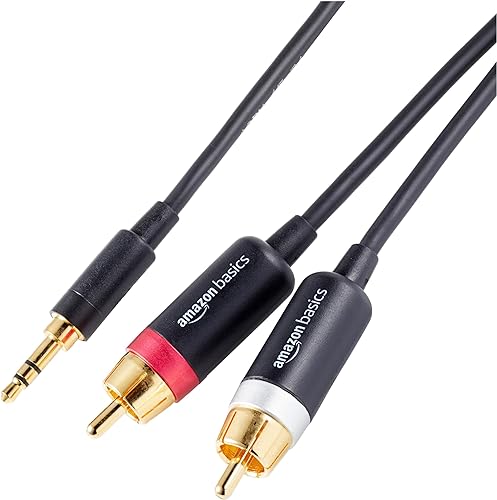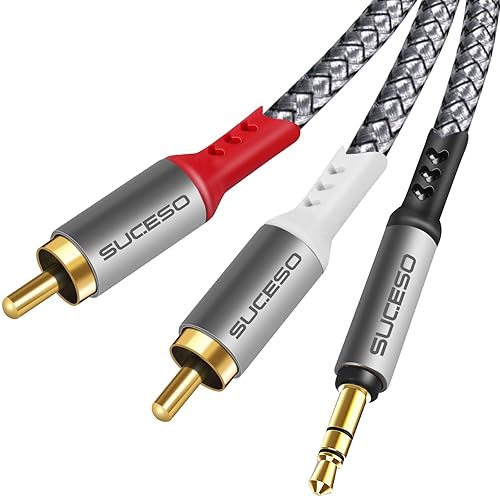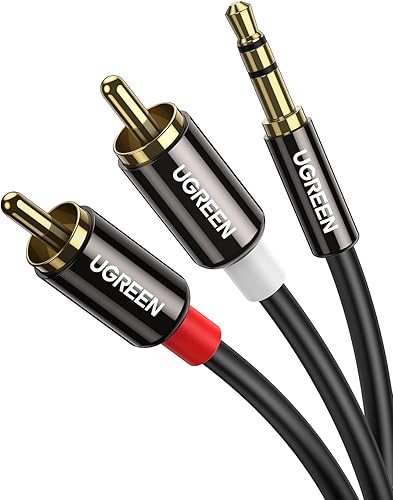How to Choose a Jack to RCA Cable in 2025? Guide and Comparison
Jack to RCA cables are essential for connecting various audio equipment, such as a smartphone, mixing console, or MP3 player to an audio system or speakers. Although these cables may seem simple, choosing the right cable is crucial to ensure high-quality audio transmission without interference. This guide will help you navigate the available options to select the cable that best suits your needs.
Our TOP 3
Amazon Basics

Pros
- Good sound quality
- Solid construction
Cons
- Be careful to avoid excessive bending
Specs
SUCESO

Pros
- High flexibility and durability
- Excellent sound quality
Cons
- Check the interface before purchase
Specs
Selection Criteria
Connector Quality
The quality of connectors plays a significant role in audio performance. Gold-plated connectors offer better conductivity, reduce corrosion, and ensure a more durable connection. Also look for well-attached connectors to avoid unnecessary disconnections.
Cable Material
The material of the cable can directly affect the quality of the transmitted signal. Oxygen-free copper (OFC) cables are recommended for their ability to minimize signal loss. Additionally, good shielding, like copper braid or aluminum, helps reduce electromagnetic interference (EMI).
Cable Length
It is essential to choose the correct cable length to avoid signal losses. A longer cable is more likely to experience signal attenuation, especially if it is not well shielded. Choose a length sufficient for your needs but as short as possible to maintain audio quality.
Flexibility and Durability
A flexible cable is easier to handle and install, especially in tight spaces. Ensure that the cable is coated with durable materials, like reinforced PVC, to withstand daily wear and ensure a long lifespan.
Common Mistakes
Choosing a Low-Quality Cable
Investing in a cheap cable may seem economical, but it can lead to interference and sound degradation. Always prioritize quality to avoid a poor audio experience.
Ignoring Shielding
Cables without adequate shielding are vulnerable to interference, especially in environments with lots of electronic equipment. Make sure your cable has sufficient shielding to protect the audio signal.
Underestimating Compatibility
Ensure that the dimensions and type of Jack connector (stereo - TRS or mono - TS) as well as the RCA connector format (analog) are compatible with your equipment to avoid connection issues.
Comparison of our 3 favorite products
Amazon Basics- Gold-plated connectors and double shielding

The Amazon Basics audio adapter cable offers a clear and faithful sound connection thanks to its gold-plated connectors and double shielding. Solid and functional, it is a reliable choice for connecting audio devices with a jack or RCA input without signal degradation.
Pros
- High-quality audio connectivity
- Robust durability for extended use
- Excellent value for money
Cons
- Recommended caution to avoid excessive bending
SUCESO- Nylon braided construction for increased flexibility

With durable nylon braiding and gold-plated connectors, the SUCESO cable is designed to offer stable sound transmission without interference. It is perfectly suited for intensive use with various audio devices, while ensuring exceptional sound quality.
Pros
- Braided nylon with resistance to over 12,000 bends
- Pure sound thanks to 24K gold-plated connectors
- Extended universal compatibility
Cons
- Need to check device interfaces before purchase
UGREEN- High sound performance with tinned conductor

The UGREEN cable offers an ideal solution for high-quality audio interconnection, featuring tinned copper conductors and multiple shielding to minimize interference. Flexible and durable, it fits various configurations and provides excellent sound performance.
Pros
- Designed to withstand over 15,000 bends
- Multiple shielding for increased protection
- Connects securely and prevents accidental disconnection
Cons
- No major drawbacks reported
Practical Tips
Anticipate Future Needs
If you plan to upgrade your audio equipment, consider a cable with slightly higher specifications to ensure future compatibility. This might include a cable with better shielding or gold-plated connectors.
Keep the Cable Tidy
Neatly wrap your cable when not in use to avoid tangling, which can damage the internal wire and affect audio performance. Use ties to keep the cable organized.
Test After Purchase
After purchasing a cable, immediately test the connection to ensure no noise interference or signal loss is present, and that the audio quality meets your expectations.
FAQ
See also: